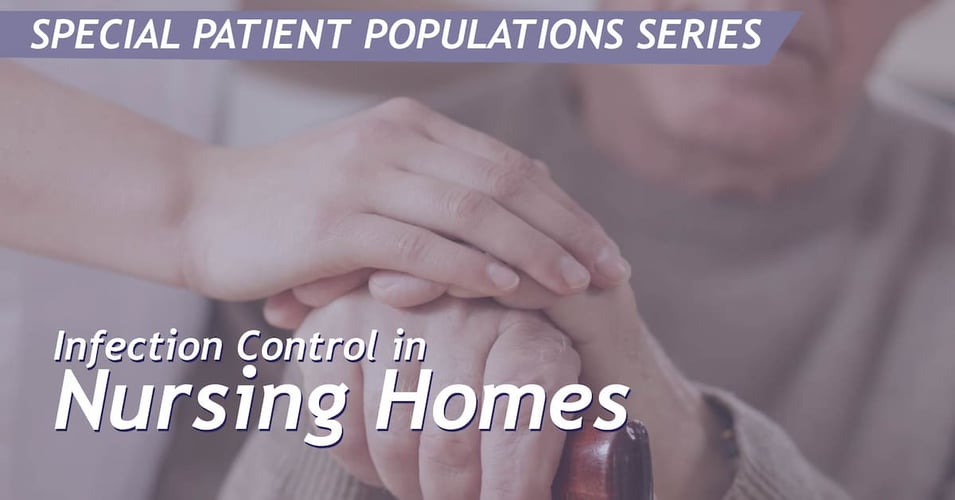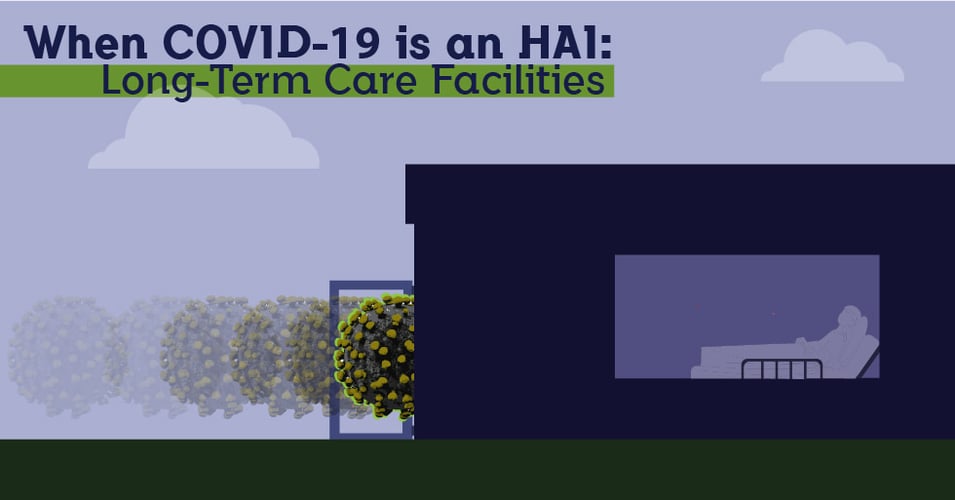What Can Nursing Homes Do to Improve Infection Prevention?

Nursing homes provide an invaluable service to our nation. Caring for elderly and medically vulnerable patients, nursing homes face unprecedented challenges in keeping their residents safe and healthy. In the midst of financial pressures, how can nursing homes help prevent the spread of healthcare-acquired infections? In today's post, we'll look at those steps that are cost-neutral, and even cost-saving, approaches to long-term infection prevention and control.
First, let's look at the difficult financial scenario facing the bulk of our nation's skilled nursing homes. Over 70% of nursing homes are for-profit entities, which alone places financial pressures on facilities to lower costs. However, since 2008, real estate investment companies have been allowed to purchase healthcare facilities, which has introduced a whole new financial relationship that is straining skilled nursing facilities. Corporations that own the nursing home business can now also own the real estate, essentially paying themselves rent, in addition to a myriad of other related-party business including consulting fees, payroll services, equipment purchases, insurance, loans, pharmaceuticals, and management fees. These built-in costs (called "tunneling") drain a significant portion of a skilled nursing home's operating budget. Centers for Medicare and Medicaid Services (CMS) requires disclosure of these third-party transactions, but more than 20% do not comply. In 2019, 3/4 of American nursing homes had related-party business transactions, accounting for $11 billion in spending.
Recent changes to federal reimbursements through the Centers for Medicare and Medicaid Services (CMS) have also placed financial strain on skilled nursing homes. Up until 2019, nursing homes were reimbursed based on the hours of therapy utilized by residents. Nursing homes could provide significant therapy to residents and get higher per diem reimbursements. From 2002-2016, residents reimbursed at "ultra-high" levels (the highest reimbursement level) went from 7% to 63% of all skilled nursing home reimbursed days. In order to move away from this model, CMS introduced a new Patient-Driven Payment Model that is no longer based on therapy hours, but instead on resident classification by condition and anticipated resource needs to serve that resident. This shift, while removing the perverse incentive of over-utilization of therapy hours, introduces a whole new set of risks. Fewer therapy hours may be utilized, which may result in poorer outcomes for residents. And now with COVID restrictions in place, group and concurrent therapy sessions are not possible. Nursing homes may be incentivized to accept sicker patients because of their higher reimbursement level, even if they don't have the ability to serve these patients as well.
So what are the boots-on-the-ground healthcare workers at skilled nursing homes to do under these financial pressures? They have the media and the public coming down on them for lapses in infection control. They have their administrators putting pressure on them to reduce costs. They have to provide services to residents while chronically under-staffed, deal with significant staff turnover, and employees who are struggling financially as well (nursing home staff are no longer allowed to work at multiple facilities at the same time due to COVID restrictions, meaning they cannot earn the second or third income that was helping their family stay fed and housed).
There are two things that veteran skilled nursing home experts recommend during these challenging times.
#1 A comprehensive infection control program that is facility-focused, not person-dependent. This means that the nursing home facility has an infection control program that exists regardless of the individuals employed at any given time. This program spells out the responsibilities of each department and is based on the specific moments or areas of greatest risk. The program should, of course, take into consideration areas surveyed by CMS during annual audits, but should not be limited to those areas. The bulk of the effort to create these plans can be undertaken at the highest administrative levels, since so many skilled nursing homes are part of a chain or system of dozens of facilities. Then, a local team can customize the plan to suit the facility.
#2 Permanent infrastructure that continuously supports infection control. There are innovative materials and products that limit transmission of pathogens 24 hours a day, regardless of staffing levels, training, or compliance. These include single-use products which are disposed immediately after use. Sinks designed to reduce standing water and toilets with lids are other examples of infrastructure choices that can help infection control. Biocidal surfaces, which kill bacteria and viruses between cleanings, can serve as an invaluable tool against disease transmission, especially when used in high-touch surfaces such as bed rails and overbed tables.
These days, the day-to-day operational and clinical staff of skilled nursing homes have less decision-making power about how their facility is run than at any other time in history. Constrained by corporate financial pressures while also trying to meet federal and state health and safety requirements as well as providing a living wage to valued employees makes for an unimaginably challenging environment. Having a strong infection control program already in place, alongside infrastructure that works alongside the staff, are two steps that can make the journey a little bit more manageable.
![EOScu Logo - Dark - Outlined [07182023]-01](https://blog.eoscu.com/hubfs/Eoscu_June2024/Images/EOScu%20Logo%20-%20Dark%20-%20Outlined%20%5B07182023%5D-01.svg)

![[infographic] Elderly Patients and HAIs Download and share!](https://no-cache.hubspot.com/cta/default/216314/interactive-178936108064.png)


